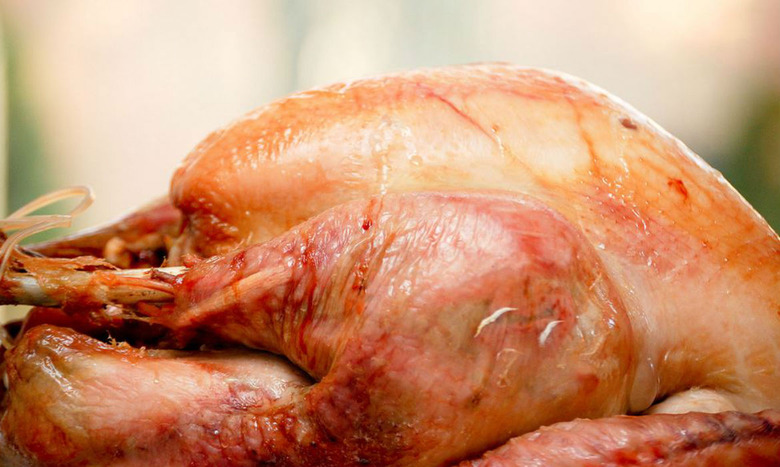Thanksgiving: A Brief History Of An American Tradition
We all think that we know the history of Thanksgiving. The Pilgrims came over from England and landed at Plymouth Rock, had a bad winter, Squanto taught them to plant crops, they had a harvest festival, and now we celebrate it every year, right? Well, it's actually a little more complicated than that, and our modern holiday pulls from a mix of fact and fiction. Here's (briefly) what we do know.
In September 1620, 102 religious separatists set off on a small ship (the Mayflower, of course) from Plymouth, England, and landed near Cape Cod 66 very uncomfortable days later. The next month they set up a colony farther south, near Massachusetts Bay, still far north of their intended destination of Manhattan Island. Many colonists stayed aboard the ship as the weather turned colder, and about half of them didn't make it through the winter. In March, those that survived moved ashore, where several days later they were met by a Pawtuxet Native American who, several years earlier, had been kidnapped by a sea captain, sold into slavery, escaped to London, then found his way back home on an exploratory expedition, learning English along the way. His name? Tisquantum, or Squanto for short.
Squanto was truly the Pilgrims' savior. He taught the malnourished settlers how to cultivate corn, catch fish, forage, extract maple sap, and avoid poisonous plants. He also brokered peace with the local Wampanoag tribe, and the resulting 50-year peace is one of the few examples of harmony between natives and settlers.
In the fall of 1621, the Plymouth colony's 53 Englishmen decided to throw a party to celebrate their first successful corn harvest, and 90 native Wampanoag joined them. Governor William Bradford sent four men out to hunt birds, and the Wampanoag contributed five deer to the celebration, which lasted for three days. The exact date of the festival is unknown, but it most likely happened sometime between September 21 and November 9.
We know that the meal was very heavy on meat, but there was also a lot of seafood, plenty of vegetables, fruits, nuts, and breads and porridges (and yes, turkey). It really was an abundance of riches, a meal worth remembering on a yearly basis.
As for Thanksgiving becoming a national holiday, that's a whole other story. Americans celebrated a national day of Thanksgiving for many years before it was officially recognized, but it was a magazine editor named Sarah Joseph Hale who was responsible for leading the charge to get the holiday on the books, and in 1863 Abraham Lincoln declared that the last Thursday in November would officially be celebrated as Thanksgiving Day.
